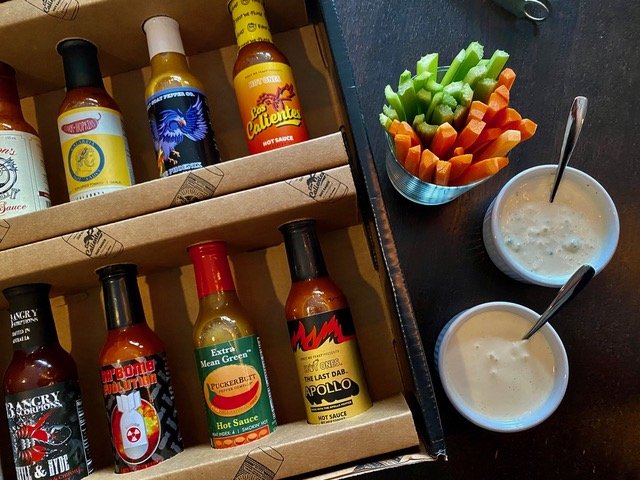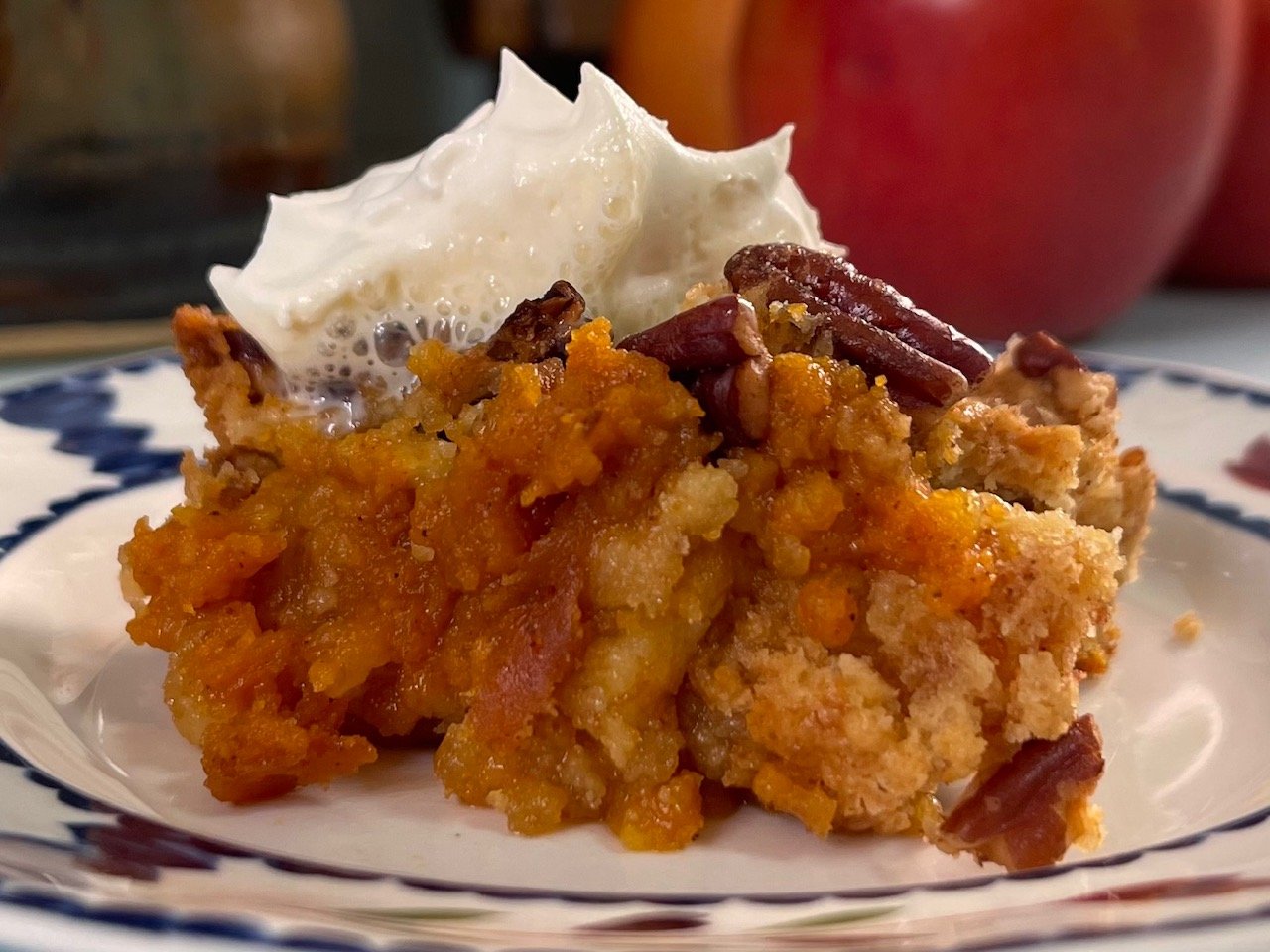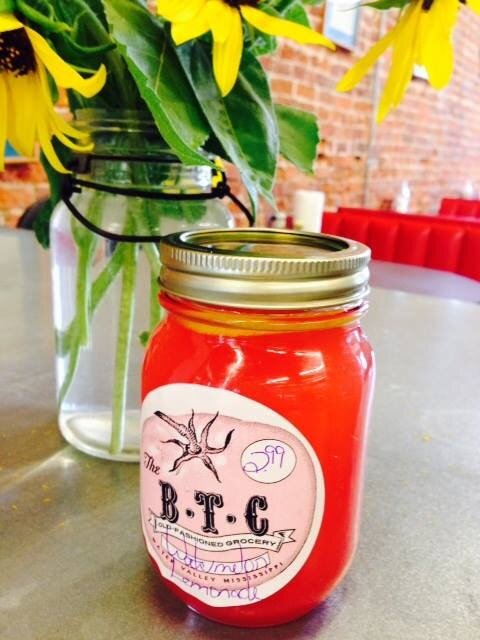The King of Cakes: Stuffed Brioche
There are rules, apparently, related to when and how a person is supposed to make and enjoy a King Cake.
The King Cake traditionally should be consumed between Epiphany and Fat Tuesday, though they go on sale much earlier and continue to be sold after. Be careful when eating to not break a tooth on the plastic baby typically hidden somewhere in the dough. And if you do find the baby in your piece of cake, you are required to buy or bake the next one.
The King Cake is essentially a delicious, stuffed brioche that can be enjoyed any time, even during Lent!
These traditions were strange ideas to me as a Northern transplant to Oxford, Mississippi, in 1988. I was a freshman at Ole Miss, and other than a couple of Georgia drive-throughs on the way to Florida vacations, The South was a subject upon which I was very dim.
But I had multiple roommates over the years, some still very close friends, who baptized me in Southern traditions, manners, dress, and, to my delight, Southern food.
I had much to learn. I am from a family who are no slouches in the cooking department. But when your curiosities begin to develop past the chicken nuggets kids’ meal and Mom’s meatloaf, and suddenly the authentic versions of foods you’ve been eating your whole life appear both in abundance and in their most perfect form, that’s when you begin to hear the first murmurs from your true “foodie” palate.
It was my dear friend Kayla who built the bridge to where I stand now. She went home to Pearl for a birthday weekend and came back with it: my very first King Cake. I had no idea what King Cake was. I’d heard of Mardi Gras - who hadn’t? - but other than actual floats, parades, krewes, and copious amounts of beads, I hadn’t realized there was a specific menu that went with the festivities.
Or that there was a cake. You can’t go wrong when there’s cake, right?
It was in my recent adult years that I researched the significance of King Cake. That’s when I found out they’ve dedicated a whole season to this cake! So, the cake is traditionally first served on Twelfth Night, January 6th, to commemorate when the Three Kings arrived in Bethlehem to greet Baby Jesus. Then you get 40 days to indulge.
Only for 40 days? Please. Rules are made to be broken. Make this cake anytime you want.
There are as many King Cake varieties as there are King Cake bakers. I knew from the cake Kayla brought back from Pearl that a traditional cake had a filling – cream cheese, cinnamon. I have had more stylized versions with chocolate, but that seems to be a mixing of metaphors.
Buttery brioche dough works perfectly. Something that eggy and buttery has no substitution. It’s an almost cheesecake-y filling ribboned with cinnamon. Just sweet enough, like the First-Class travel section version of a cheese Danish. Sometimes braided in the Brioche tradition, sometimes an oval, or even a horseshoe; good luck on top of good luck bestowed upon the finder of the beloved Baby. It’s topped with colored sugar - green for faith, gold for richness and purple for royalty. The sanding sugars’ grit play perfectly off the smoothness of the cheese filling. Maybe some beads alongside as a decoration.
So, let’s break the rules. I adapted this recipe from the Very Best Brioche recipe from The Suburban Soap Box. Can’t find a plastic baby this late in the season? Worry not. Bake. Eat. Enjoy.
King Cake on a pedestal waiting to be eaten!
Stuffed Brioche/King Cake
Makes 2 King Cakes
Cake Ingredients
1/3 cup warm water about 110 degrees
2 1/4 tsp active dry yeast (not rapid rise)
2 1/3 cups super fine pastry flour or cake flour
2 cups all-purpose flour
1/2 cup granulated sugar
2 tsp kosher salt
6 large eggs
8 oz. unsalted butter cut into 1-inch cubes, room temperature
Filling Ingredients
16 oz. cream cheese, room temperature
1 cup white sugar
2 tsp vanilla
2 tsp cinnamon
Egg wash: 2 whole large eggs, beaten with 2 TB cold water
2 miniature plastic babies (optional, available in the Baby Shower section of hobby stores)
Glaze Ingredients
1 1/2 to 3 cups powdered sugar
Up to 1/4 cup whole milk
2 tsp vanilla (optional)
Sanding sugar in dark green, dark purple and gold
Instructions
Whisk the water and yeast in a small bowl. Let stand for 10 minutes until completely dissolved. Set aside.
In the bowl of a stand mixer fitted with a dough hook, sift together the pastry flour, all-purpose flour, sugar and salt. Turn the mixer on low and add the eggs to the bowl 1 at a time beating well after each addition. Slowly add the yeast mixture and continue beating at low speed for 5 minutes. Stop the mixer and scrape down the sides of the bowl. Turn the mixer on low and beat for an additional 5 minutes.
Add the butter cubes 1/3 at a time, beating for about 1 minute after each addition. Once the butter has been added, beat for 10 more minutes until the dough is smooth.
Transfer the dough to a lightly oiled large bowl and cover with plastic wrap. Let the dough rest in a warm place until doubled in size, approximately 3 hours.
Turn the dough out on a well-floured surface and gently knead out the air bubbles. Return the dough to the bowl, cover with plastic wrap and refrigerate overnight. (This is important. It allows your butter to restabilize after the rise.)
Turn the dough out onto a floured surface. Have about 1 cup of flour ready in case the dough decides to be a diva and needs extra attention. If necessary, knead in TINY amounts of additional flour until the dough is smooth and compliant. When ready, divide the dough in half with a sharp knife or a bench scraper.
Roll each piece of dough into a 20 x 8-inch rectangle. Flour lightly as you don't want to incorporate too much more flour into the dough, especially if you had to add in additional flour in Step 6.
Spread filling all over the rectangles, leaving 1/4-inch border around edges of dough. Place the baby wherever you'd like (optional and at your own risk). Starting at the long edge, roll the dough tightly toward you, like a cinnamon roll. Roll the seam to the bottom and press down lightly to seal the edge. Transfer each roll to a parchment-lined 18x13-inch rimmed sheet pan. Carefully bring the ends around together into a circle or an oval and seal the open edges together with your fingers.*
Allow the dough to rise, covered, in a warm place until doubled in size, approximately 2 hours. You can do this in an oven on the "Keep Warm" setting. Keep an eye on the temp, it shouldn't be more than 100-125 degrees. Do not be tempted to go warmer to raise the dough faster - it will over-rise and lose texture and flavor. Adjust the temp as necessary keeping the dough as draft free as possible. If you have aa Proofing Oven, today’s the day to use it.
Preheat the oven to 350°F. Egg wash the top and sides of the rolls. This creates the deep beautiful golden color, and the SHINE Brioche is known for. Bake 30-35 minutes, until golden brown and 190°F in center of ring. (You can't test with a toothpick because of the filling.) Remove from the oven and allow to cool for 2-3 minutes. Take the cakes off the parchment (reserve for later) and transfer to cooling rack until completely cooled. Prepare the glaze and sanding sugars. You want the glaze to be firm and semi-set so it doesn't run off the cake, and you want the sanding sugars open and in small dishes, ready to apply.
Slide the cakes from the cooling rack onto cake boards. Put the cake boards and cakes on top of the cooling rack and place the parchment underneath to catch drips. Working in sections, drizzle glaze over one quarter of each cake, and immediately decorate with sanding sugars. Continue until all four quarters are decorated. Allow the cakes to set.
Serve whenever you’re ready! Room temp is delicious, warm is delicious-er! Take more pictures now that it’s finished. Send to friends. Be proud. You MADE a Brioche King Cake. Now you should get ready for the friends who tell you they are on the way over. Have you had Brioche stuffed French Toast? That’s a song for another time, but I will surely sing it for you if you'd like. You did good. Be proud of yourself. Enjoy your creation.
*Alternatively, dollop the filling down the middle of the rectangle and gently fold the remaining dough around the filling. Or, slice the rectangle into three strips, dollop filling down the center of each strip, fold the dough over the filling and seal the edges well; pinch the ends of the three rolls and braid, bringing ends together to make a small circle. Pinch the dough ends together to create a continuous braid.























































